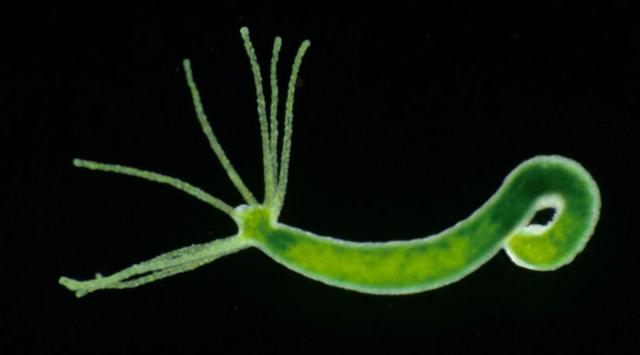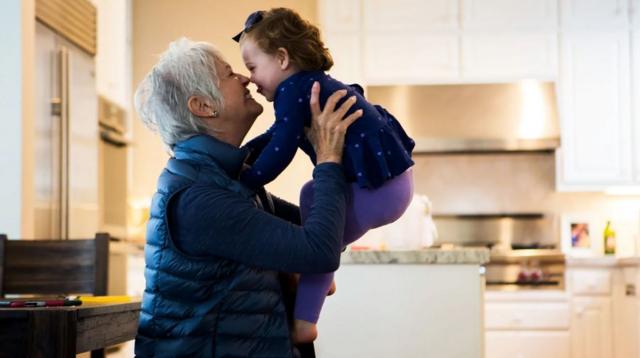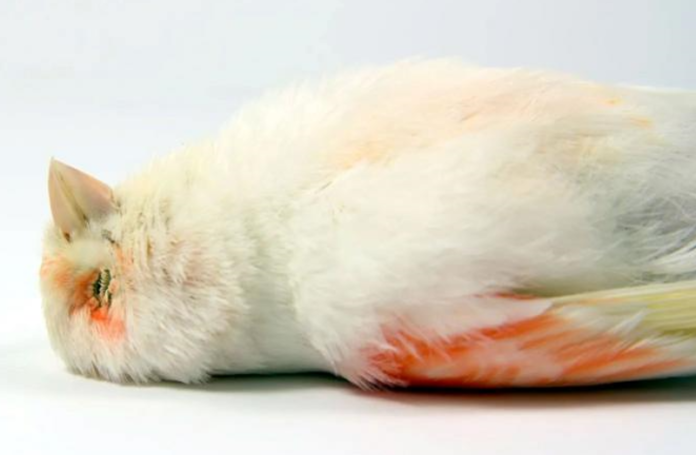Among all the strange inhabitants of reservoirs who live in our oceans and rivers, it is quite possible not to pay attention to the hydra. This freshwater relative of the jellyfish, anemone and corals was named after the ancient Greek mythological serpent that could grow heads.
In general, an inconspicuous creature resembles dandelion seeds - with a long body and a tentacle at one end. But it has a noticeable property - the ability to regenerate. If you cut the hydra into many parts, each part will grow again into a new individual.
Such regenerative properties were interested in biologists who sought evidence of immortality in nature. Why does this species look like a natural death? And is death inevitable?
In the mid-20th century, aging was described as a compromise between reproduction and cell conservation. Initially, organisms use their resources to grow and maintain our health - that is, keep our cells.
In childhood and adolescence, the main thing is to survive and become as strong as possible and healthier. After puberty, the priority shifts to reproduction. As the resources of most organisms are limited, reproduction of offspring can occur by loss of health.
Take an example of salmon that sails against the current on spawning and immediately dies. He spends all his resources to get the best chance of getting to the spawning place, and when he is here, to use this opportunity. The likelihood that the salmon will swim back downstream will survive for another year in the sea, make the same journey and will be successful again, so small that natural selection will never contribute to the survival of such individuals.
In addition, they have successfully passed their genes successfully.
But now we understand much more specifically why creatures die. When organisms reach puberty, the power of natural selection weakens, and aging begins, which ultimately leads to death. But not in order to free up the place to the next generation, which can be "attractive from the point of view of altruism," says Alexei Maklakov, Professor of Evolutionary Biology and Biogerontology at the University of Eastern England in the United Kingdom.

Photo author, Natural Visions/Alamy signature to photo, freshwater hydra, named after the ancient Greek mythological snake, has a wonderful ability to regenerate
Throughout life, our genes accumulate mutations. Some of them are accidental, while others are the result of our diet or external factors such as ultraviolet light. Most have no effect or harm.
To puberty, "any gene mutation that reduces the likelihood of reproduction of the body or even destroys the body before it reproduces, will be strictly counteracting," says Gabriella Kunturides, an evolutionary biologist from the University of Anthropology.
When the body reaches puberty, it acquires the ability to pass its genes to the next generation. At this point, the power of natural selection weakens.
Take our salmon. He has successfully achieved maturity and got the ability to multiply. His offspring will probably have a high chance of spawning. If he had a mutation after spawning, which would randomly increase his life expectancy and allow him to live for another year (although it would be extremely unlikely), his descendants would not have much benefits over his brothers and sisters next year. Our salmon and without mutations already have one generation of offspring.
In terms of natural selection, the effort required to maintain health after reproduction does not benefit. As a consequence, any genes that give this opportunity do not suffer the pressure of selection that would lead to their spread.
"The individual would like to stay alive. But after reproduction, natural selection does not contribute too much because he has nothing to pass to the next generation," Kunturides says.
However, not all organisms are arranged as extremely as our salmon. Some live a little longer to have more offspring.
Most of the mutations of our DNA will have negative consequences or will not have them at all. Our bodies are able to restore individual DNA damage, but our ability to do it worsens with age due to the weaker power of natural selection.
Aging and death occur in two ways - the accumulation of negative mutations through poor natural selection, as well as the accumulation of mutations that could be favorable for reproduction but become negative for longevity.
One example of the latter can be the mutation of the BrCA gene. They are known to increase the risk of breast cancer and ovaries, but are also associated with higher fertility in women who are carriers of mutations. Therefore, it is possible that the mutations of the BrCA gene create a reproductive advantage at an early stage of life, but later there is a greater risk to health. But since natural selection weakens after puberty, reproductive advantages outweigh the disadvantages.
"Everything that happens at the beginning of life will outweigh what will happen after reproductive age, because reproductive potential really matters," says Caitlin McGy, a biologist at Oregon University.
Cell aging - when cells stop dividing - can be another example of an early period of life, which becomes a disadvantage in late. Cell aging protects us from cancer, as it can prevent cell multiplication with damaged DNA. However, later in life, aging cells can accumulate in tissues, causing damage and inflammation, and they are precursors to age -related diseases.
Although most species grow up, there are some exceptions. Many plants show "slight aging" and some species have been living for thousands of years. One of the particularly interesting examples is Pando Tree in Fishleak National Forest in Utah. This tree is actually a colony of genetically identical trembling male aspen, united by one root system. It covers an area of more than 400,000 square meters. m and weighs more than 6000 tons. According to some estimates, he can be more than 10,000 years old.
The hydra relative, the immortal jellyfish, has another brilliant way to provide longevity - it is able to return from the stage of the adult body to the early stage of the polyp, if it is injured, ill or stress.
"Although at some point you should ask yourself - is the same person or something else?" McGy says.

Author Photo, Arch White/Alamy
There is also an assumption that some species become more successful with age - this is called "negative aging" - but the evidence is lacking, Maklakov says.
"If the ecology of the species is such that the reproduction for some reason is generally low or it cannot multiply at an early stage of life, it changes how the selection works," Maklakov says.
Examples can be found among animals that mate in harems - such as walruses or deer. One male can control a whole group of females. The size of this group, and therefore, the amount of offspring it may have, can increase with its age and size. Thus, its productivity continues to grow.
Although some species can retain their reproductive capacity with age, they are not real examples of negative aging, and studies that say it are probably false, says Maklakov. In the end, the walrus will not be able to control the harem endlessly.
But sex can play an interesting role in our aging.
According to Megan Arnot and Ruth Mace from the University College of London, women who have a regular sexual life, menopause comes later. They assume that this is an example of a compromise - that the energy consumed on ovulation could be better used by the rest of the body if there is no chance of pregnancy.
But in the rest of the wildlife, greater fertility, as it looks like, accelerates aging. For example, bats who have more offspring live shorter than those that have fewer offspring. Perhaps, having been able to multiply, they invest in it all they have.
"There is such a compromise in a time when organisms that multiply well at an early stage of life do not multiply so well in the later stages," McGue says. (Again, our hydra is also an exception to this rule. It seems that the level of their fertility is not reduced during life.)
In addition, there are types whose life expectancy is very different between sexes. As a rule, ants, bees and termites have a king or queen, who can be very fruitful long -lived compared to their barren workers.
Why in their case the price they pay for reproduction does not reduce their lives?
The answer may be that the king or queen are protected from many threats faced by workers, and there is such a difference between their lifestyles that theories of aging do not work for them equally.

author, Brooke Fasani/Getty Images signat
So, if reproduction has such a strong impact on the duration of our lives, why do people live so long after they cease to give birth to children?
Grandmother's Hypothesis suggests that it is important for older relatives to stay alive because reproduction is a matter of expensive and risky.
Grandmother can ensure the survival of certain genes by investing efforts in raising grandchildren, and therefore a longer life can bring an advantage in terms of natural selection.
"Families who have grandmothers have a much better reproductive capacity, perhaps because the mother can focus on the birth of more children, and grandmothers help raising children who are already there," Kunturides says.
But since grandchildren have only 25% of common genes with their grandmother, they are as associated with her as she with her nieces and nephews.
"The thing may also be that in the past, women have not survived to be able to reproduce offspring at the age of 50.
Many of what happens to us in later life can be unpleasant, but there is no powerful force in evolution that could protect us from it.


